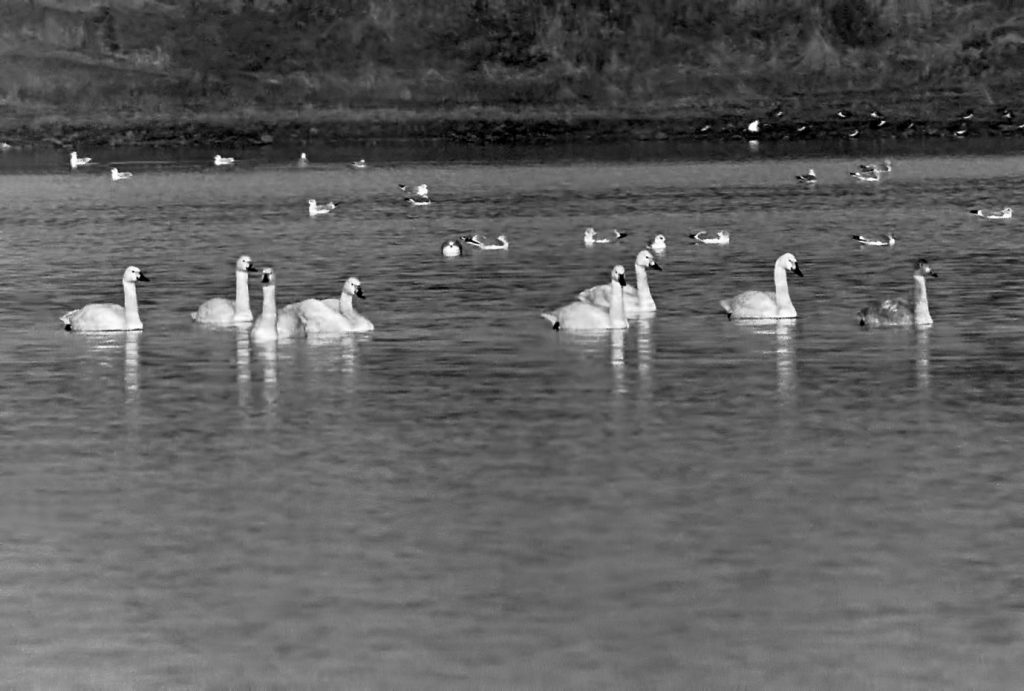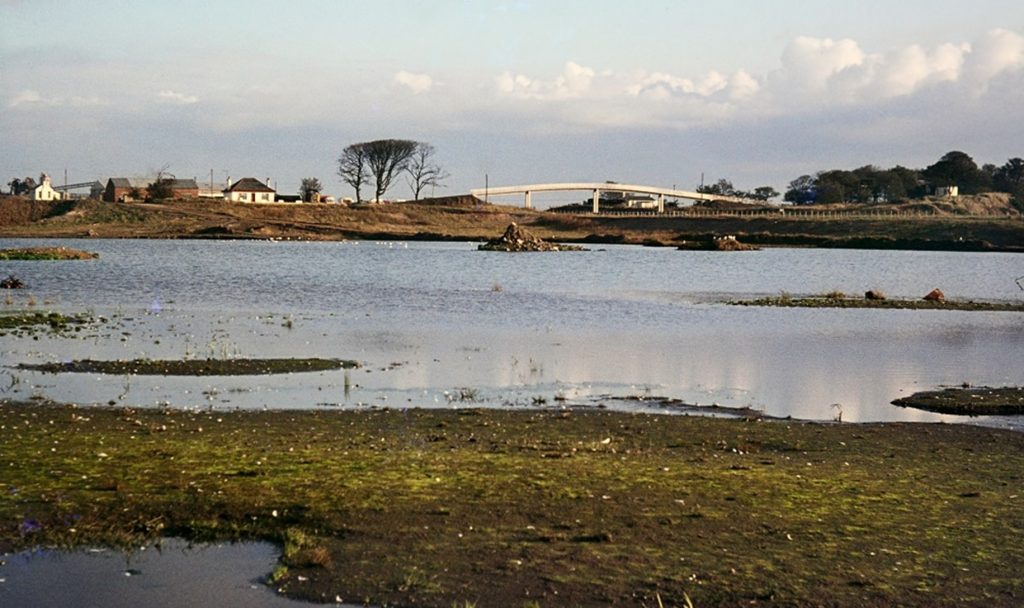Bewick’s Swans at Shewalton
Like many bird species in the UK, Bewick’s Swan has become much scarcer as a winter visitor. This is partly due to a decline in its world population, and also because of changing patterns of migration. During the 1970s, autumn passage and over-wintering of Bewick’s Swans in Scotland was regular, with birds often stopping off on islands like Islay, these birds heading to their winter quarters in Ireland. During the period of October-December, some would occasionally drop in at well-watched Ayrshire localities such as Shewalton Sandpits.

The sand extraction pit, which lay directly south of the cemetery at NS327367, was well known to Ayrshire birders during its existence, and it had turned up some rare birds e.g. Wilson’s Phalarope and Pectoral Sandpiper. It was easily accessed on foot, and equally easy to watch from the roadside banking. It really depended on whether your preference was for waders or wildfowl when it came to your appreciation of the place. Much of what you saw there depended on the water level and the extent of the sandy fringe, which could become quickly overgrown.
Between 1976 and 1978, an attempt to reduce the encroachment of vegetation was made. Donald Smith used a good, old-fashioned harrow towed behind his Land Rover to accomplish this, and the results were such that the extent of available feeding for waders was greatly extended. Passage birds such as Spotted Redshank, Little Stint and Curlew Sandpiper showed up, and 2 Pectoral Sandpipers were present in both 1976 and 1977. It also became a valuable haven for wildfowl, with good numbers of once-common wintering ducks like Pochard showing up. It was during this period that a party of 12 Bewick’s Swans arrived. First noted on 18th December, they hung around until the 29th, when half the group departed, with the remaining 6 staying into early 1979.
This had clearly become a valuable wildlife area, and basic plans were drawn up by the late Bill Brackenridge to set up an educational resource. The proposal was presented to representatives from both the local authority and Irvine New Town planning department. Whilst the latter appeared enthusiastic, the former took the line followed by many local authorities at the time – that wetlands were ideal places in which to dispose of rubbish. Fortunately, this ill-informed approach to Ayrshire wetlands didn’t take root and, although the old Shewalton sandpit has been replaced by a landfill site, other equally valuable sites within the county have avoided that fate.
Below is a photo of the old Shewalton, taken at the end of the 1970s. The nearby SWT reserve and the water-filled sand extraction pit at NS333361 are valuable replacements, but neither offers the same wader habitat which was available at the former Shewalton. Similarly, the possibility of seeing another flock of Bewick’s Swans in Ayrshire has all but gone, for the time being at least.

Angus Hogg
April 2023